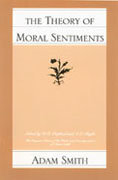Questions.,,,
2. Consider a closed economy in which the central bank follows an interest rate rule. The IS relation is given by Y = C( Y - T) + I( Y, r) +G, where r is the real interest rate. The central bank sets the nominal interest rate according to i = i* +a(me - 7* ) + b( Y - Yn), (1) where we is expected inflation, 7* is the inflation target, and Yn is the natural level of output, a > 1, and b > 0. The symbol i* is the target interest rate the central bank chooses when expected inflation equals the target rate and output equals the natural level. The central bank will increase the nominal interest rate when expected inflation rises above target, or when output rises above the natural level. Note that this is a modified Taylor rule from the one shown in class. Real and nominal interest rates are related by the Fisher relation, r = i - q (a) Define the variable r* as p* = i* - 7*. Use the definition of the real interest rate to express the interest rate rule as r=r* + (a - 1) (me - 1* ) + b( Y - Yn) (b) Graph the IS relation in a diagram, with r on the vertical axis and Y on the horizontal axis. In the same diagram, graph the interest rate rule you derived in part (a) for given values of me, * and Ym. Call the interest rate rule the MP relation. (c) Using the diagram you drew in part (b), show that an increase in government spending leads to an increase in output and the real interest rate in the short-run. (d) Now consider a change in the monetary policy rule. Suppose the central bank reduces its target inflation rate, 7*. How does the fall in * affect the MP relation? What happens to output and the real interest rate in the short-run?Question 1 Consider the wage setting relation to be W = P F(u,z) (for the case when P=P) and the price setting relation to be W/P = 1/(l+ m). a) Graph the equilibrium unemployment level. 12) Corporations decide to increase the mark up 'om m to m'. Graph the new wage setting relation and describe what will happen to the unemployment level. c) If F(u,z) = 15 211 and m = 0.5, what is the value of the unemployment level. d) What would happen if the unemployment benets indicator decreases from 15 to 10. Graph and explain. plicaon: Minimum wagg articles 1) 2) 3) 4] 5] John Kennan describes a 1915 Bureau of Labor Statistics report that studies a natural experiment affecting retail stores in Oregon. Base your answers to the following questions on Kennanis description of the report. {a} What is the policy change that the report studies? {b} What are the experimental groupsiI (c) 1|What is the control group? (d) Why is the control group necessary? (e) Are there any problems with this control group? (f) What are the results, and what do they suggest about the effects of minimum wages on employment? Richard Freeman breaks the world into the 1311's and 311's. Applying this logic to a change in the minimum wage in a competitive model of labor supply and demand, {a} give an example of a labor market where you think that the 311's are most likely to be correct, and (b) give an example where the SR's are most likely to be correct. What is your reasoning in each case? Illustrate your answers with diagrams that show clearly what features of supply and demand curves make the diagrams correspond to 311's and SR's. Card and Kmeger (p. TT3) emphasize that one s'u'ength of their analysis is that the implementation of the New Jersey minimum wage occurred during a recession. (a) Consider the case where the minimtun wage was implemented right before an economic expansion instead. Draw a diagram that clearly shows how an economic expansion affecting both New Jersey and Pennsylvania might have invalidated the results of the 'natural experiment.' (h) Someone points out to you that, according to Table 3 of C&K., fast food employment fell in PA but it barely bridged in NJ. Hence, they say, if we just look at NJ, it seems pretty clear that there is no support for a monopsony scenario. How would you respond to this criticism within the 'natural experimentI framework. Draw a carefully labeled diagram that illustrates your point. A N] legislator, after hearing ofthe Ciel-i results says to her colleagues, \"This is good news: the minimum wage increase raised fast food employment. We should pass ftu'tber increases to get more teenagers jobs.\" Taking her initial premise as correct the minimum wage increase did raise employment analyze her conclusion with a diagram that shows under what circumstances she would be right and what circumstances she would be wrong. Richard Freeman distinguishes between the short and long run impacts of minimum wage increases, implying that the long run impacts are likely to be larger [and more negative). List one or two specic economic reasons why the long run response would be larger. Consider that labor is not the only factor in fast food restaurants' production functions









